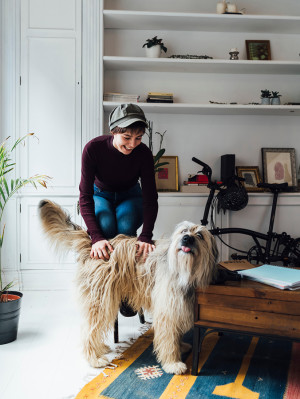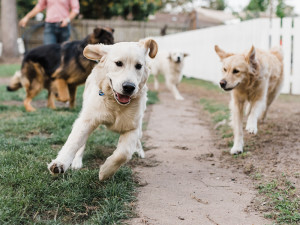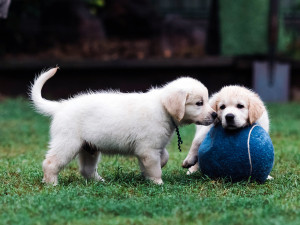The Rule of 3s — Learn About Your Rescue Dog’s Major Milestones
What to expect in the first three days, three weeks, and three months.
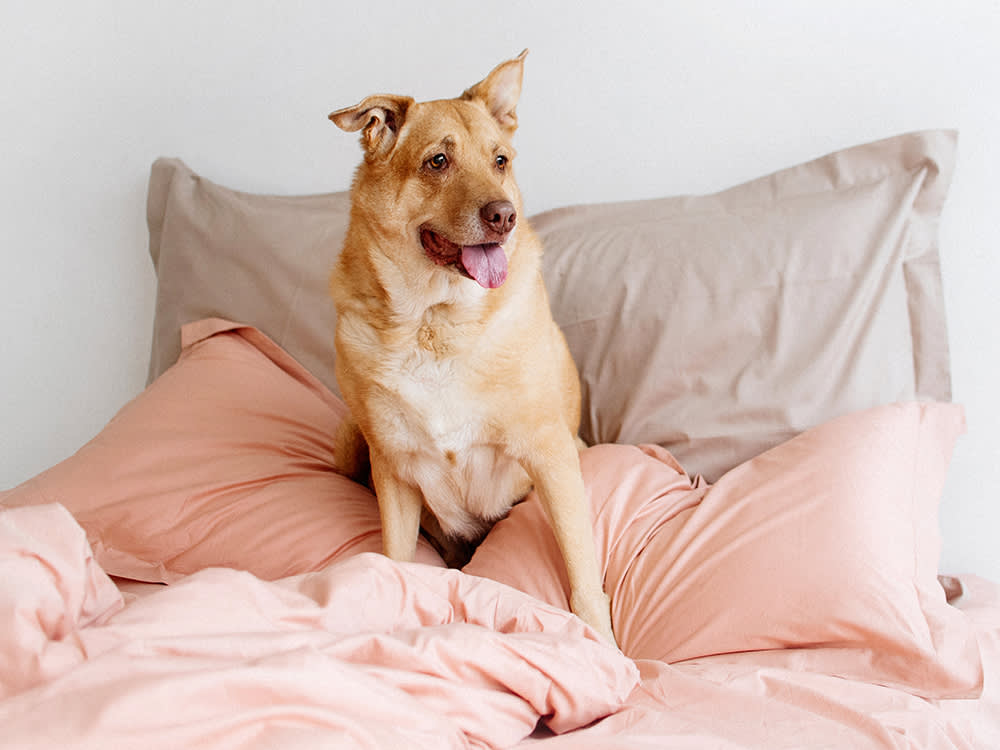
Share Article
No matter how Type-A you consider yourself, bringing home a new dog is overwhelming. And by the time they actually arrive at your house, you may be so burned out on research, prep, and all the logistics you had to sort in advance that you’re at a loss for what to do with them. (Cue the Who the hell are you? staring contest.) Don’t freak out: Just remember the Rule of Threes, and you’ll get through the getting-to-know-you phase just fine.
When it comes to dog development, you can expect your dog to go through pretty distinct “decompression phases” in the first three days, weeks, and months after they become your roommate. During these periods, it’s important to establish a routine and to set expectations for yourself and your pup. After all, this is a long-term commitment for the two of you. But don’t feel pressure to rush it — getting through the ups and downs of learning all about each other won’t happen in a day, a week, a month…maybe even a year, if I’m being honest. The Rule of Threes will just give you a running start.
The first three days
Think about the last time you were in an unfamiliar situation — maybe you felt shy and acted like a wallflower, or maybe you were totally energized and extended your hand to anybody who would shake it. People have different reactions to newness, and so do dogs.
The first three days will likely be overwhelming, and every dog will react differently to suddenly being in a new place, with new smells and new people. Puppies may have always been with their siblings, and are now suddenly expected to sleep alone at night. Adolescent dogs may be unable to sit still, seemingly bouncing off the walls, eager to explore everything. And dogs of any age may all of a sudden have accidents, even if they are already house-trained. Some dogs may shut down, and some may act out. All of this is normal. Just remember that these first few days are not an indication of how your dog will be forever — for better or worse!

The best way to prep for this period is to set aside three days for scheduled, quiet integration. It’s tempting to have all your favorite people over to meet your new pup, but that can be too much for a dog who is in the midst of learning who is a safe person and what is a safe place. Set up a routine and keep it the same every day; for example, feed them in the same spot and go the same route on every walk — all at scheduled times. Soon, you’ll find your pup is relaxing and starting to show more of their personality.
The first three weeks
It takes three weeks for a dog to get through what I like to call “The Honeymoon Period.” During that time, dogs are learning the rules of the new place. They probably aren’t barking at the doorbell because they don’t feel protective of their home yet, nor are they hoarding their toys because they may never have had creature comforts before and don’t even know what they’re meant for! They may not pull on the leash, either, because they’re still trying to figure out where they are.
On the flip side, behaviors like crying in the crate at night or guarding their food may be happening. Your dog is still unsure of what the next day will look like, and this can manifest in anxiety and general restlessness.
The best thing you can do is stay consistent. Work on simple training like recognizing their name, sitting, and going to their “place” or bed. If your dog starts guarding their possessions, hire a professional trainer ASAP so you can nip this behavior in the bud before it gets worse. And if you have other pets, carefully supervise all interactions between resident dogs, because the novelty of a new playmate may wear off when they begin to realize they have to share their stuff. Make sure each dog has a designated safe space where they can go if they feel overwhelmed (or where they can safely be kept out of the way if need be). Stay consistent with walking schedules and gear to set good habits.
The first three months
After three months, your dog will finally be showing their true personality. They will have formed emotional attachments with you (and your other pets), they’ll understand that this is home, and they will have hopefully settled into a routine. If you’re still seeing negative behaviors, this is a good time to kick training into high gear. You may want to add more walks, obedience training, and mental stimulation to keep your pup happy. If everything isn’t perfect at this stage, that’s OK! Now’s the time to work with your pal to get it sorted for good.
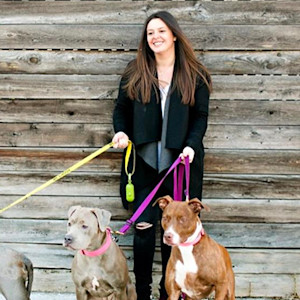
Samantha Cheirif
Sam Cheirif is a professional copywriter, and has been an animal rescue volunteer for eight years. She started fostering almost seven years ago, and has since been a foster mom to over 100 dogs, with only four becoming permanent residents. She lives in LIC with her husband, son, two rescue pit bulls, and a cranky old hospice foster. You can follow their adventures on IG @pigpenthepittie.
Photo: @realhappydogs
Related articles
![Happy young female student playing with hairy dog at home]()
You’ve Got Company: How to Cohabitate with a New Dog
Boundaries, right? But if they end up sleeping in bed, that’s cool, too.
![woman gives small black dog treat for sitting]()
Your Dog Should Do This 30-Day Training Challenge
It’s like your 30-day yoga challenge — except with way more training treats.
![Dog walker crossing a street with three dogs]()
How to Prepare Your Dog For Daycare and Dog Walkers
Set your pup up for success.
![Four dogs running around in an enclosed outside area]()
Should You Send Your Pup to Dog Daycare?
Doggy daycare is more than just fun and games.
![man and lab puppy on park road]()
When, Exactly, Should You Vaccinate Your Puppy?
If it’s time for a round of shots (no, not that kind), follow this guide.
![Two Golden Retriever puppies playing with a large blue tennis ball outside in the grass]()
What to Expect at Puppy Socialization Classes
A dog behaviorist schools us on why puppy classes are more about socializing than getting straight As.



